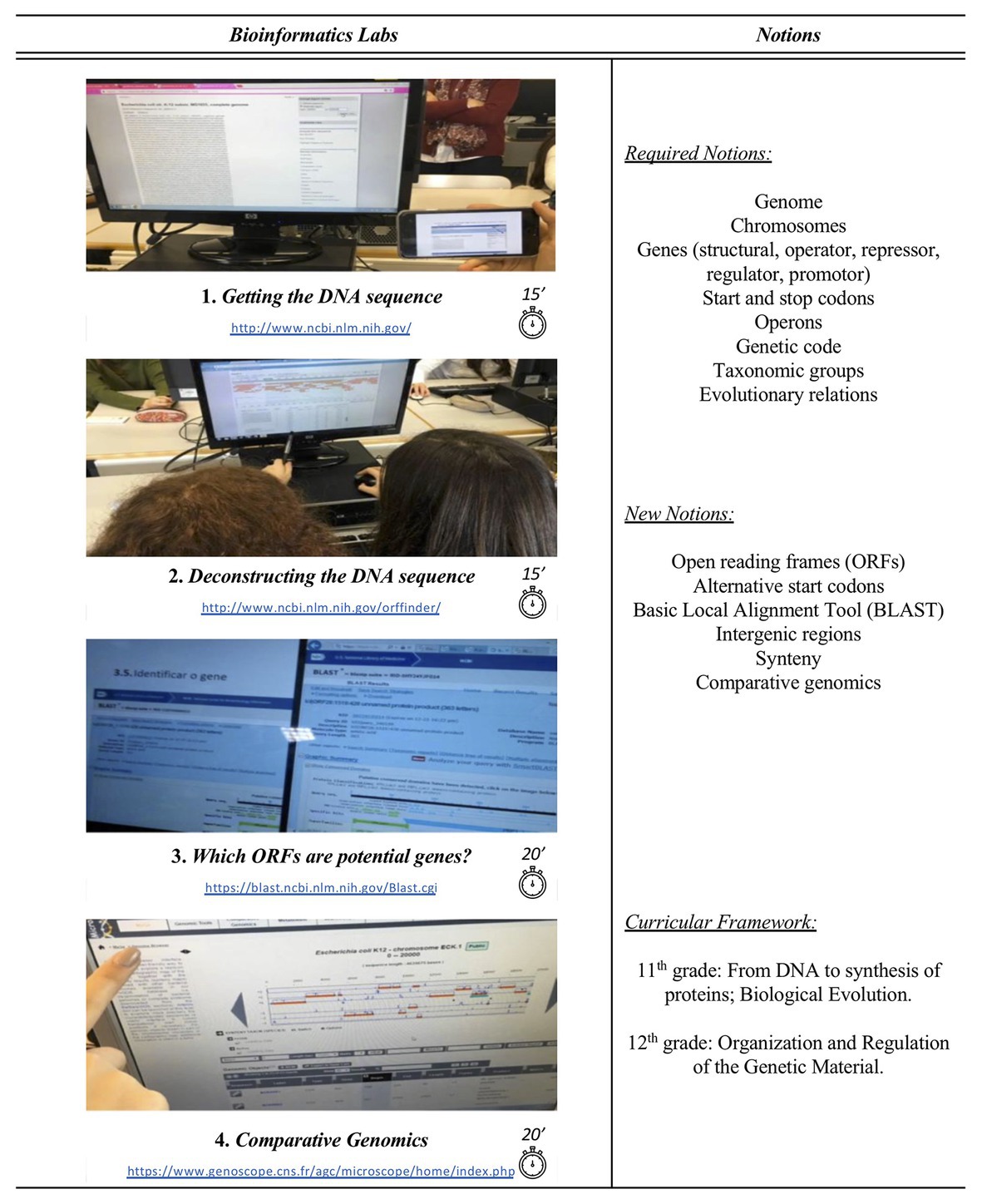Some Known Questions About Bioinformatics Tutor.
Some Known Questions About Bioinformatics Tutor.
Blog Article
Getting The Bioinformatics Tutor To Work
Table of ContentsThings about Bioinformatics TutorSome Known Details About Bioinformatics Tutor Fascination About Bioinformatics TutorNot known Incorrect Statements About Bioinformatics Tutor The Best Guide To Bioinformatics Tutor
Of the overall individuals involved in the training, 80% were pupils from public college institutions, while the staying 20% originated from private organizations. To get approved for a certificate of engagement, pupils were required to participate in at least 90% of the overall training hours. As a result of this need, an excellent 95% of the participants successfully obtained their certifications, having not just satisfied the minimum presence requirements however additionally finished all assigned tasks throughout the training.
During the height of the COVID-19 pandemic, particularly in between June and August 2020, the task team was entrusted with arranging specialized training in bioinformatics. This training was specifically intended at trainees from the study team Core for Study in Applied Computer at the Federal University of Pará (UFRA) The adaptation to remote understanding platforms as a result of the pandemic produced a possibility to check out new training methodologies and digital devices that boosted both reach and effectiveness.
This training course was developed to give an accessible yet thorough summary of Artificial Intelligence methods, especially as used in bioinformatics (Bioinformatics Tutor). This online format allowed engagement from pupils across Brazil, many of whom could not have had the chance to participate in in-person sessions.
Indicators on Bioinformatics Tutor You Should Know
A significant attribute of this program was its focus on hands-on understanding. Roughly 50% of the complete training hours were devoted to practical tasks where trainees built intelligent models and applications in a variety of clinical domain names, including genetics, molecular biology, and ecological information analysis. Extensively used devices and structures such as Spyder, Google Colab, Jupyter Notebooks, and Orange were incorporated right into the coursework. These platforms made it possible for pupils to take part in real-time information control, design training, and formula trial and error.
Sixty of them were connected with numerous higher education institutions in the state of Pará, while the continuing to be twenty came from organizations located in five other Brazilian states. By presenting Artificial Knowledge in a functional and relevant context, the campaign offered to connect the gap between theory and real-world application, providing students with a strong foundation for future research study or work in the area.
The training effort created part of a broader academic outreach initiative referred to as the Bioinformatics on the Roadway project. This task has, over the years, introduced dozens of students to the world of bioinformatics and computational biology. The events held under this umbrella campaign have taken location throughout several regions and years, as summarized in Table 1 (List of occasions, areas, years, and complete numbers of pupils and trainers)
Several of these teams, originally brought together by their engagement in training events, have actually considering that gone on to create independent clinical study in collaboration with local academic establishments. The training not just cultivated scientific thinking within the context of bioinformatics yet also triggered collective connections that expanded beyond the training setting.
Rumored Buzz on Bioinformatics Tutor
The project itself was conceptualized and arranged by MB and RR, who supervised the preparation and implementation of each action. Lectures were provided by a multidisciplinary team including MB, FA, EF, KP, JS, DM, SN, LP, LG, AIR CONDITIONING, rr, and ih. The exact same team, excluding IH and RR, also served as tutors for the useful training components. Financing for the project was supplied via the give 88887.200562/ 2018-00 from CAPES. The authors extend their gratitude to everyone that added to the understanding of this task, whether straight or indirectly, given that its inception.
The Federal University of Pará's Workplace of Research study (PROPESP/UFPA) also offered financial backing, specifically for the manufacturing of the last manuscript. The writers declare no financial or commercial problems of passion that could have affected the study. Furthermore, all interpretations and opinions revealed in this post are only those of the authors and do not necessarily mirror those of their corresponding establishments, the author, editors, or customers associated with the magazine procedure.
Our Bioinformatics Tutor Statements
From a pedagogical perspective, the teaching approach used in the training was deliberately interactive. Courses were conducted in a fashion that urged trainee participation and discussion, surpassing rote memorization to discover exactly how concepts are established, used in day-to-day live, and tested in scholastic setups. The educational ideology concentrated on nurturing both solid and struggling students, offering personalized support, news and structure self-confidence through continual mentorship and perseverance.

Each team, containing about 36 participants, was sustained by three coaches-- many of whom were postdoctoral scientists with specific proficiency. These mentors not just aided design the group jobs yet additionally promoted their execution, making sure that each research concern was both suitably challenging and pertinent. The objective was to give a biologically sensible context that participants could check out with flexible objectives and access to curated datasets.
For additional understandings into the technique and end results of this project-based discovering approach, viewers are directed to S1 Text, which consists of comprehensive descriptions of the instructional framework, examination strategies, and task styles used in the training sessions.
Unknown Facts About Bioinformatics Tutor
Of the overall individuals entailed in the training, 80% were pupils from public higher education institutions, while the remaining 20% came from private establishments. To qualify for a certificate of involvement, pupils were required to attend at least 90% of the complete training hours. Notably, beyond the students who signed up in the training sessions, 7 seasoned trainers got involved in providing the programs, while 3 committed research professors collaborated the total training procedure. Around 50% of the complete training hours were dedicated to useful activities where students built their website intelligent models and applications in an array of scientific domain names, consisting of genes, molecular biology, and ecological data analysis. The training not only promoted scientific thinking within the context of bioinformatics yet additionally sparked collaborative relationships that extended past the training setting.
Report this page